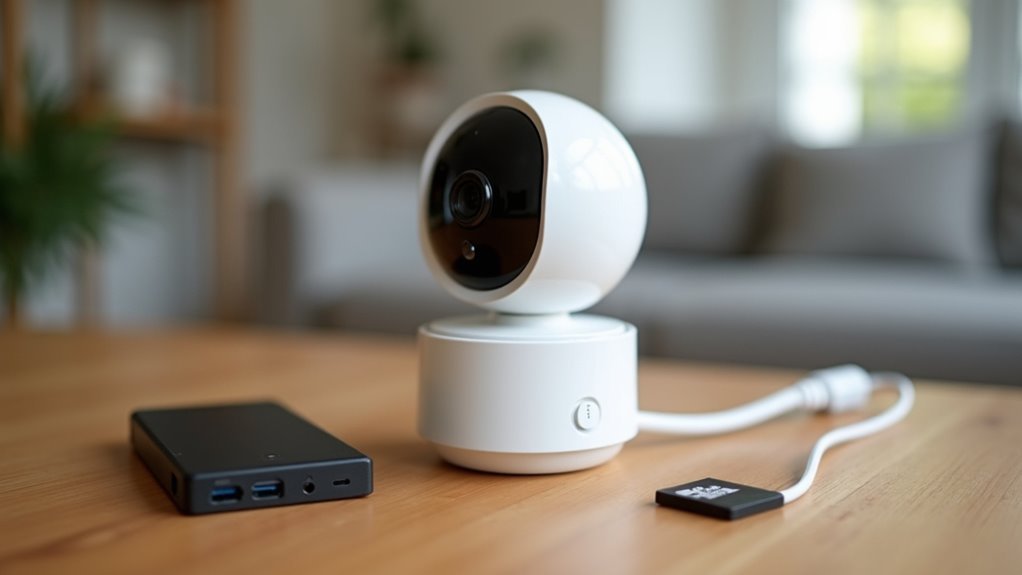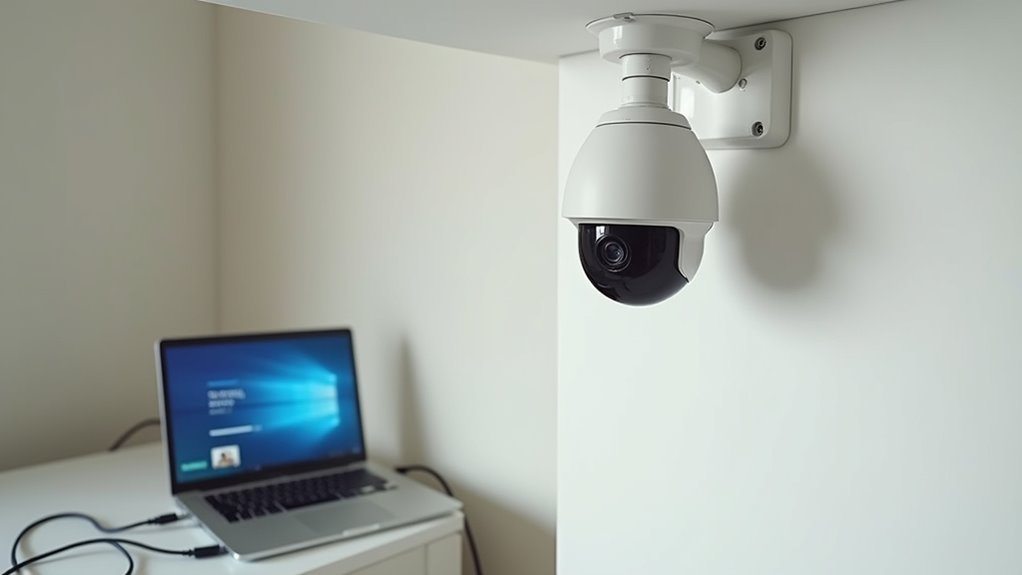You’ve installed indoor security cameras to protect your home, but now you’re wondering who else might be watching. While these devices offer valuable peace of mind, they can also create unexpected privacy vulnerabilities that expose your most intimate moments to hackers, data breaches, or unwanted surveillance. The good news is that you don’t have to choose between security and privacy—with the right strategies, you can achieve both.
Enable Local Storage and Disable Cloud Recording

When privacy concerns outweigh the convenience of cloud storage, enabling local recording on your indoor security cameras offers a more secure alternative. Most security cameras like the TP-Link Tapo C120 and Eufy Indoor Cam C120 support microSD card storage up to 128 GB, giving you complete control over your video recordings without internet dependency.
Disabling cloud recording eliminates security vulnerabilities associated with online data breaches. You’ll maintain better data security by keeping footage stored locally on your device rather than third-party servers.
Local storage keeps your security footage under your direct control, away from potential cloud-based data breaches and unauthorized access.
Look for cameras with customizable settings that allow you to turn off cloud features entirely.
Remember to regularly manage your local storage by deleting old recordings to optimize space and maintain ongoing privacy protection for your home surveillance system.
Set Up Network Isolation for Camera Devices
Creating a separate network for your indoor security cameras represents one of the most effective privacy strategies you can implement. Setting up network isolation involves creating a dedicated Wi-Fi network exclusively for camera devices, preventing unauthorized access from other devices on your main network.
Configure a VLAN configuration in your router to segment traffic and restrict communication between networks, greatly enhancing privacy and security. Regularly review settings and disable remote access features you don’t need, minimizing external access risks.
| Security Method | Implementation |
|---|---|
| Dedicated Network | Create separate Wi-Fi for camera devices |
| VLAN Setup | Segment traffic through router configuration |
| Connection Type | Use Ethernet connections when possible |
Implement a firewall to block unnecessary internet access, keeping cameras isolated while functional.
Configure Two-Factor Authentication and Strong Access Controls

Although network isolation provides a strong foundation for camera security, you’ll need robust access controls to prevent unauthorized users from viewing your indoor footage.
Enable two-factor authentication on your security cameras immediately—brands like Wyze and Blink offer this feature. Use SMS codes or authenticator apps rather than email verification, as they’re more secure against hacking attempts.
Create unique passwords for all user accounts associated with your cameras. This prevents unauthorized access through weak credential attacks.
Regularly update your device firmware to patch security vulnerabilities that could compromise video quality and create privacy issues.
Consider cameras with advanced encryption like UCAM’s blockchain technology, which generates unique access keys.
Configure these strong access controls on your mobile device to guarantee only authorized users can view your indoor surveillance footage.
Use Privacy Masks and Motion Detection Zones
Even with strong access controls in place, you’ll want granular control over what your indoor cameras actually monitor and record. Privacy masks let you block specific areas from surveillance, guaranteeing sensitive zones stay private while maintaining security elsewhere.
Privacy masks provide granular control over surveillance areas, blocking sensitive zones while maintaining security coverage in other parts of your home.
You can adjust these customizable features through your camera app, giving you complete user control over what’s monitored.
Motion detection zones work alongside privacy masks to trigger alerts only in designated areas. This prevents unnecessary notifications from private space activity while focusing on security-critical zones.
Modern indoor cameras like the Reolink E1 Pro offer intuitive apps for configuring both features.
These security measures guarantee you receive relevant alerts without compromising privacy, creating an efficient system that respects personal boundaries while maintaining effective home protection.
Implement Regular Firmware Updates and Security Audits

Beyond configuring privacy settings, maintaining your camera’s security requires consistent firmware updates and systematic security reviews.
You’ll need to install critical security patches that manufacturers release to fix vulnerabilities and enhance security features, reducing unauthorized access risks. Regular firmware updates protect your security cameras from evolving threats and improve overall performance.
Conducting security audits helps you identify privacy risks by reviewing camera settings and access logs. You can uncover overlooked issues like default passwords or improper access permissions that malicious actors might exploit.
These audits guarantee only authorized personnel access your camera feeds, protecting against both hacking attempts and employee misconduct.
Combining firmware updates with security audits creates a proactive approach to camera security, establishing robust protection for your indoor surveillance system.
Frequently Asked Questions
How Can I Hide My Indoor Security Camera?
You can disguise your camera using decorative objects like plants or picture frames. Position it high on shelves or corners where it’s less noticeable. Consider privacy screens to block unwanted viewing angles while maintaining surveillance coverage.
How Can I Stop My Neighbors Camera Pointing at My House?
You can approach your neighbor for a friendly discussion about repositioning their camera. If that doesn’t work, install privacy fences, plant tall shrubs, or check local laws regarding surveillance and property boundaries.
Do You Have to Tell Someone if You Have a Camera in Your House?
You’re generally not legally required to tell guests about cameras in common areas of your house, but you must inform them if cameras are in private spaces like bathrooms or bedrooms.
Will a Laser Pointer Disable a Security Camera?
You can potentially damage a security camera’s sensor with a laser pointer, but it’s likely illegal tampering that could result in criminal charges, and many cameras won’t be effectively disabled anyway.





Leave a Reply